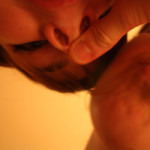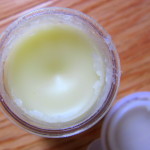The NADA (National Acupuncture Detoxification Association) protocol for addictions recovery and detoxification consists of 5 acupuncture points on each ear. Developed by Michael Smith, it has been implemented in North America in various detoxification and addictions treatment centres across North America. It’s a beautiful example of the effectiveness of acupuncture and it’s implementation into mainstream medical treatment facilities.
In Traditional Chinese Medicine (TCM), the ears represent the opening of the Kidneys, which are the root of yin and yang. Addiction, according to TCM, is a “hollow fire phenomenon”. Fire is out of control and looks for an outside source to settle down. It arises as a result of emotional trauma, restlessness and self-nourishment with harmful substances. When suffering from hollow fire, the body seeks nourishment from things that provide no nutrients, such as intoxicating substances. The Kidneys, in TCM, are a source of water that can serve to calm down the excessive fire in people who suffer from addiction.
The NADA protocol is performed on patients in a group setting, preferably in complete silence, in the seated position. Points are needled in a specific order (from top to bottom) and left in for 30 minutes. Patients are reported to feel immediate relaxation and many sleep for the 30 minutes. Our society is primarily yang in nature: busy, active and often stressful. The NADA protocol encourages nourishment of yin: sleep, relaxation, self-reflection and stillness.
The NADA experience ideally consists of weekly treatments (in a community acupuncture setting) but it is thought that, when patients come in, they “receive what they need” with each treatment. In some cases it can be simply finding a space where one can rest. In others, it could mean taking a step in the direction of loosening oneself from the intricate tangles of denial and heading down the path to acceptance and, hopefully, recovery.
The protocol balances withdrawal symptoms during detoxification, such as diarrhea, bloating or intensity of cravings. However, NADA is not only for use in serious drug and alcohol addiction, but has been used to assist people quit smoking, has been shown to increase memory and attention and can also help people manage anger and anxiety, which, in some cases, may be at the root of various substance addictions.
NADA isn’t nada. It’s mucho!
For more info about the protocol and how to receive certification in the procedure go to http://acudetox.com/.






